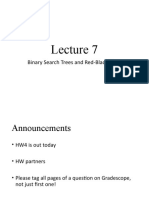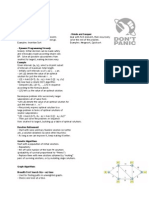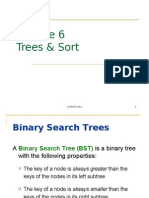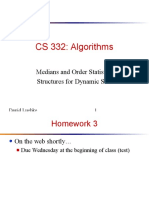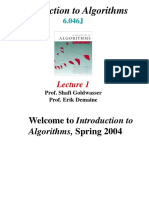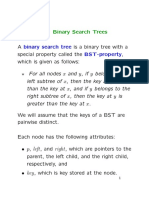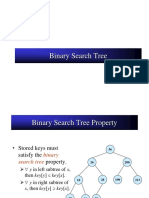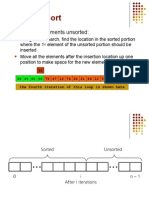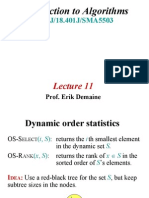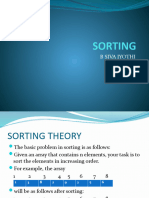0% found this document useful (0 votes)
11 views24 pagesLecture 08
This lecture covers Binary Search Trees (BSTs), detailing their structure, properties, and operations such as insertion, deletion, and searching. It discusses the efficiency of these operations, highlighting that while the worst-case time complexity can be O(n), the average case is O(log n) when the tree is balanced. The lecture also introduces concepts like successors, predecessors, and nearest neighbors in the context of BSTs.
Uploaded by
benno0810Copyright
© © All Rights Reserved
We take content rights seriously. If you suspect this is your content, claim it here.
Available Formats
Download as PDF, TXT or read online on Scribd
0% found this document useful (0 votes)
11 views24 pagesLecture 08
This lecture covers Binary Search Trees (BSTs), detailing their structure, properties, and operations such as insertion, deletion, and searching. It discusses the efficiency of these operations, highlighting that while the worst-case time complexity can be O(n), the average case is O(log n) when the tree is balanced. The lecture also introduces concepts like successors, predecessors, and nearest neighbors in the context of BSTs.
Uploaded by
benno0810Copyright
© © All Rights Reserved
We take content rights seriously. If you suspect this is your content, claim it here.
Available Formats
Download as PDF, TXT or read online on Scribd
/ 24




